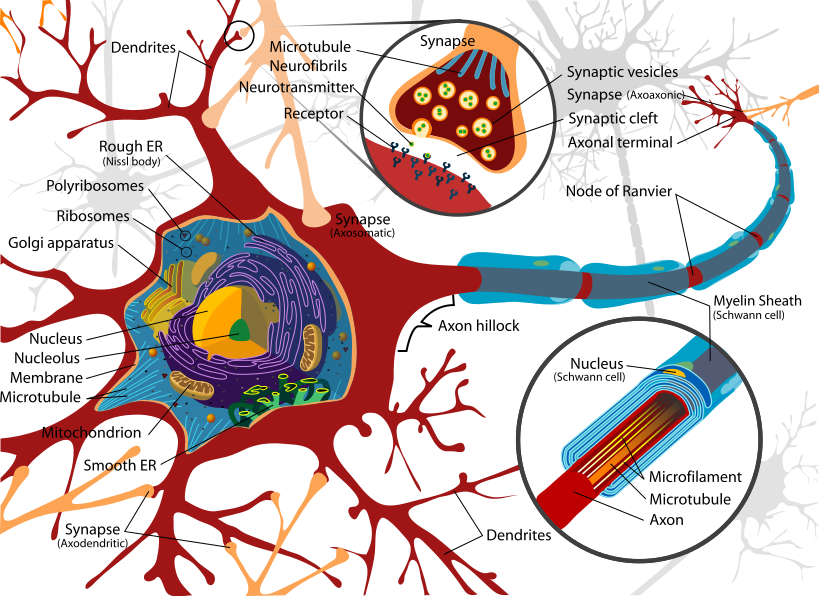CHAPTER 1: Brain Basics
The Neuron
1Cells within the nervous system, called neurons, communicate with each other in unique ways. The neuron is the basic working unit of the brain, a specialized cell designed to transmit information to other nerve cells, muscle, or gland cells. In fact, the brain is what it is because of the structural and functional properties of interconnected neurons. The mammalian brain contains between 100 million and 100 billion neurons, depending on the species. Each mammalian neuron consists of a cell body, dendrites, and an axon. The cell body contains the nucleus and cytoplasm. The axon extends from the cell body and often gives rise to many smaller branches before ending at nerveterminals. Dendrites extend from the neuron cell body and receive messages from other neurons. Synapses are the contact points where one neuron communicates with another. The dendrites are covered with synapses formed by the ends of axons from other neurons.

2When neurons receive or send messages, they transmit electrical impulses along their axons, which can range in length from a tiny fraction of an inch (or centimeter) to three feet (about one meter) or more. Many axons are covered with a layered myelin sheath, which accelerates the transmission of electrical signals along the axon. This sheath is made by specialized cells called glia. In the brain, the glia that make the sheath are called oligodendrocytes, and in the peripheral nervous system, they are known as Schwann cells.

3The brain contains at least ten times more glia than neurons. Glia perform many jobs. Researchers have known for a while that glia transport nutrients to neurons, clean up brain debris, digest parts of dead neurons, and help hold neurons in place. Current research is uncovering important new roles for glia in brain function.
4Nerve impulses involve the opening and closing of ion channels. These are selectively permeable, water-filled molecular tunnels that pass through the cell membrane and allow ions — electrically charged atoms — or small molecules to enter or leave the cell. The flow of ions creates an electrical current that produces tiny voltage changes across the neuron’s cell membrane.